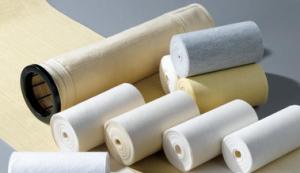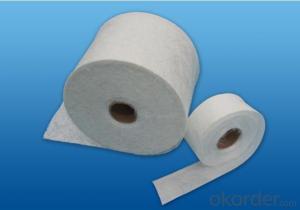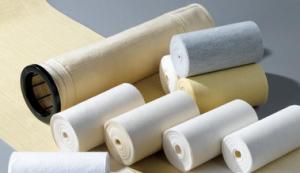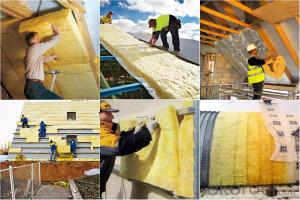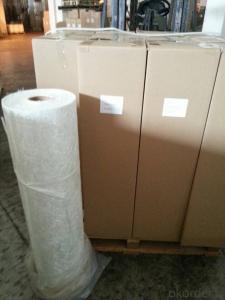FIBERGLASS STITCHED MAT 300g
OKorder Service Pledge
OKorder Financial Service
You Might Also Like
Structure of FIBERGLASS STITCHED MAT Description
The stitched mat is made of chopped strand which randomly dispersed and be stitched together by polyester thread. The width is available from 150-2400mm.Density of mat generally is 300-600g/m2.
The product is compatible with Polyester resin, vinyl ester resin, and epoxy resin.
Stitched mat is mostly primarily in pultrusion, RTM, filament winding, compression molding and hand lay up processes.
It is widely used in pipe lining, pultrusion section, storage tanks, FRP boat, insulation panel etc.
Main Features of FIBERGLASS STITCHED MAT
◎ Uniform thickness, good wet tensile strength retention.
◎ Good mould-ability, good drapability and easy operation.
◎ Good wet out speed and high efficiency in production.
FIBERGLASS STITCHED MAT Images

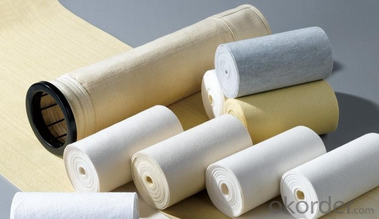
FIBERGLASS STITCHED MAT Specification:
Code | Density(g/m2) | Chopping layer density g/m2 | Width mm |
EMK225 | 225 | 225 | 150~2600 |
EMK250 | 250 | 250 | 150~2600 |
EMK300 | 300 | 300 | 150~2600 |
EMK450 | 450 | 450 | 150~2600 |
EMK600 | 600 | 600 | 150~2600 |
FAQ of FIBERGLASS STITCHED MAT
1. Why Choose us?
CNBM is a stated own company, provide the guarantee for the best quality, best service and safety business.
2. How will we guarantee the quality?
a, ISO 9001-2008 quality control system;
b, Strict and regular quality control in production;
c, Inspeciation when loading into container before shippment;
d, Sample stock for one year for quality tracing and record.
3. What is your MOQ?
Our MOQ is one pallet.
4. Can you provide sample?
Yes, samples are in stock. we can offer free sample for you.
5. Payment terms?
We can accept L/C, T/T etc.
6. Do you offer OEM service?
Yes, we can print customers’ logo on the packaging;
And the size and specification can be produced and design according to your demand.
- Q:Can fiberglass mat tissue be used for electrical transformers?
- Fiberglass mat tissue can be used for electrical transformers. It is commonly used as insulation material in transformer manufacturing due to its excellent electrical insulation properties. Fiberglass mat tissue is made of fine glass fibers bonded together with a resin, creating a strong and durable material. It is able to withstand high temperatures and has a high dielectric strength, making it suitable for use in electrical transformers. Additionally, fiberglass mat tissue is lightweight and flexible, allowing for easy handling and installation in transformer components. It is also resistant to moisture, chemicals, and fire, further enhancing its suitability for transformer applications. Overall, fiberglass mat tissue is a reliable and efficient choice for insulation in electrical transformers.
- Q:What are the properties of fiberglass mat tissue?
- Fiberglass mat tissue, also referred to as fiberglass mat or fiberglass matting, is a non-woven material made from glass fibers, possessing numerous properties that render it suitable for diverse applications. 1. With regards to strength and durability, fiberglass mat tissue is renowned for its high tensile strength, enabling it to endure substantial stress without fracturing. This quality makes it ideal for fortifying and reinforcing various materials and structures. 2. Despite its strength, fiberglass mat tissue remains relatively lightweight, facilitating easy handling and transportation. This characteristic proves particularly advantageous in industries where weight reduction plays a crucial role, such as aerospace and automotive. 3. The flexibility of fiberglass mat tissue allows it to conform to curved surfaces and intricate shapes. Consequently, it proves versatile and appropriate for applications requiring the material to be molded or shaped into specific designs. 4. Fiberglass mat tissue exhibits excellent resistance to various chemicals, including acids, alkalis, and most solvents. This attribute renders it suitable for use in corrosive environments, such as chemical processing plants or storage tanks. 5. Fiberglass mat tissue possesses commendable thermal insulation properties, effectively reducing heat transfer. Consequently, it proves valuable in applications necessitating heat insulation, such as the construction of walls, roofs, or insulation boards. 6. Inherently fire-resistant, fiberglass mat tissue does not contribute to the propagation of flames. As a result, it finds extensive use in applications where fire safety is paramount, such as the production of fire-resistant doors, panels, or insulation materials. 7. Furthermore, fiberglass mat tissue offers excellent sound insulation properties, diminishing the transmission of noise through walls or other structures. This characteristic renders it suitable for implementation in soundproofing applications, such as recording studios or automotive interior panels. Overall, the properties exhibited by fiberglass mat tissue endow it with versatility, allowing for a wide range of applications across various industries, including construction, automotive, aerospace, and marine. Its strength, flexibility, lightweight nature, chemical resistance, thermal and sound insulation properties, as well as its fire resistance, contribute to its popularity and usefulness in numerous applications.
- Q:Can fiberglass mat tissue be used for insulation in hot climates?
- Yes, fiberglass mat tissue can be used for insulation in hot climates. Fiberglass is known for its excellent thermal insulation properties, which make it suitable for both hot and cold climates. In hot climates, fiberglass insulation helps to prevent the transfer of heat from outside to the inside of a building, thus maintaining a comfortable indoor temperature. It acts as a barrier by reducing the heat transfer through conduction, convection, and radiation. Additionally, fiberglass insulation is fire-resistant, durable, and does not absorb moisture, making it an ideal choice for insulation in hot climates.
- Q:Can fiberglass mat tissue be used for repairing fiberglass surfboards?
- Yes, fiberglass mat tissue can be used for repairing fiberglass surfboards. Fiberglass mat tissue is a commonly used material for repairing and reinforcing fiberglass structures, including surfboards. It is lightweight, flexible, and easy to work with, making it ideal for patching up cracks or holes in the surfboard's fiberglass shell. The mat tissue is typically applied with epoxy resin, which bonds the tissue to the surfboard's surface, creating a strong and durable repair. However, it is important to note that the success of the repair depends on the skill and technique of the person performing it. It is recommended to seek professional help or guidance if you are not experienced in surfboard repairs.
- Q:Can fiberglass mat tissue be used for making lightweight ceilings?
- Yes, fiberglass mat tissue can be used for making lightweight ceilings. It is a strong and lightweight material that is commonly used in construction for its fire resistance, durability, and insulation properties. It can be easily molded and shaped to create lightweight ceiling panels, making it an ideal choice for applications where weight reduction is desired.
- Q:Can fiberglass mat tissue be used for bridge deck rehabilitation?
- Yes, fiberglass mat tissue can be used for bridge deck rehabilitation. It is a commonly used material due to its durability, strength, and resistance to corrosion. Additionally, it provides a smooth surface for the bridge deck, helps in preventing cracking and deterioration, and improves the overall structural integrity of the bridge.
- Q:Can fiberglass mat tissue be used for architectural applications?
- Yes, fiberglass mat tissue can be used for architectural applications. It is commonly used as a reinforcing material in architectural elements such as roofing, insulation, and wall panels. Its high strength, durability, and fire resistance make it suitable for various architectural purposes.
- Q:Does fiberglass mat tissue require any special precautions during disposal?
- Yes, fiberglass mat tissue does require special precautions during disposal. Due to its composition, fiberglass mat tissue can release fine particles and fibers into the air when handled or broken. These particles and fibers can be harmful if inhaled or come into contact with skin and eyes. Therefore, it is important to take certain precautions when disposing of fiberglass mat tissue. Firstly, it is recommended to wear appropriate personal protective equipment (PPE) such as gloves, goggles, and a respirator mask to minimize the risk of exposure. This will help prevent the inhalation of airborne particles and fibers and protect the skin and eyes from any potential irritation. Secondly, fiberglass mat tissue should be disposed of in sealed bags or containers to prevent any loose fibers from becoming airborne during transportation. It is also advisable to label the bags or containers as "hazardous" or "fiberglass waste" to alert others of the potential risks. Furthermore, it is important to follow local regulations and guidelines for the disposal of fiberglass mat tissue. Depending on the location, there may be specific requirements for handling and disposing of hazardous waste materials, including fiberglass. These regulations are in place to protect public health and the environment. In summary, fiberglass mat tissue does require special precautions during disposal to minimize the risk of exposure to harmful particles and fibers. Wearing appropriate protective equipment, using sealed containers, and following local regulations are essential steps to ensure safe disposal practices.
- Q:Can fiberglass mat tissue be used for reinforcing fiberglass boats?
- Reinforcing fiberglass boats is possible with the utilization of fiberglass mat tissue. This material, composed of randomly arranged fiberglass strands held together by a binder, is lightweight, flexible, and easy to work with, making it an excellent choice for this purpose. To create a strong and durable composite material, fiberglass mat tissue is typically combined with fiberglass resin in boat construction. The mat tissue is laid down and infused with resin, which then undergoes curing and hardening to establish a rigid structure. This process effectively enhances the boat's strength, stiffness, and resistance to impact. Fiberglass mat tissue is commonly applied in areas of the boat that require additional reinforcement, such as the hull, deck, or other high-stress regions. By distributing and absorbing forces, it reduces the likelihood of cracking or failure. Moreover, it provides additional protection against impacts and abrasions, thereby extending the lifespan of the boat. Nevertheless, it is important to recognize that fiberglass mat tissue alone may not suffice for reinforcing fiberglass boats. It is often utilized in combination with other reinforcement materials, like fiberglass cloth or woven roving, to create a well-balanced and optimized reinforcement system. Ultimately, the utilization of fiberglass mat tissue for reinforcing fiberglass boats significantly enhances their structural integrity and durability. It is a versatile and cost-effective option that is widely employed in the boat building industry.
- Q:How does the fiber distribution of fiberglass mat tissue affect its strength?
- The strength of fiberglass mat tissue is significantly influenced by the distribution of its fibers. The primary source of strength for fiberglass mat tissue is the inclusion of fibers within the material. These fibers act as reinforcement and aid in evenly distributing stress and load across the surface. The distribution of fibers in fiberglass mat tissue refers to their arrangement and orientation within the material. When fibers are evenly distributed, with a consistent arrangement and orientation, the strength of the fiberglass mat tissue is enhanced. This uniform distribution allows for efficient transfer of load from one fiber to another, resulting in improved overall strength. Conversely, an uneven or random distribution of fibers, where they are clumped together or oriented in various directions, compromises the strength of the fiberglass mat tissue. This uneven distribution can create areas of concentrated stress, leading to weak points and potential failure under load. Additionally, the strength of fiberglass mat tissue is also influenced by the length and density of the fibers. Longer fibers provide greater reinforcement and enhance the tensile strength of the material. Furthermore, a higher fiber density, meaning more fibers per unit area, increases the overall strength and performance of the fiberglass mat tissue. In conclusion, the strength of fiberglass mat tissue is directly impacted by the distribution of its fibers. A uniform and evenly distributed arrangement of fibers improves the material's strength by facilitating efficient load transfer. Conversely, an uneven or random distribution compromises the strength by creating stress concentrations and weak points. The fiber length and density also contribute to the overall strength of the fiberglass mat tissue.
1. Manufacturer Overview |
|
|---|---|
| Location | |
| Year Established | |
| Annual Output Value | |
| Main Markets | |
| Company Certifications | |
2. Manufacturer Certificates |
|
|---|---|
| a) Certification Name | |
| Range | |
| Reference | |
| Validity Period | |
3. Manufacturer Capability |
|
|---|---|
| a)Trade Capacity | |
| Nearest Port | |
| Export Percentage | |
| No.of Employees in Trade Department | |
| Language Spoken: | |
| b)Factory Information | |
| Factory Size: | |
| No. of Production Lines | |
| Contract Manufacturing | |
| Product Price Range | |
Send your message to us
FIBERGLASS STITCHED MAT 300g
OKorder Service Pledge
OKorder Financial Service
Similar products
New products
Hot products
Hot Searches
Related keywords
